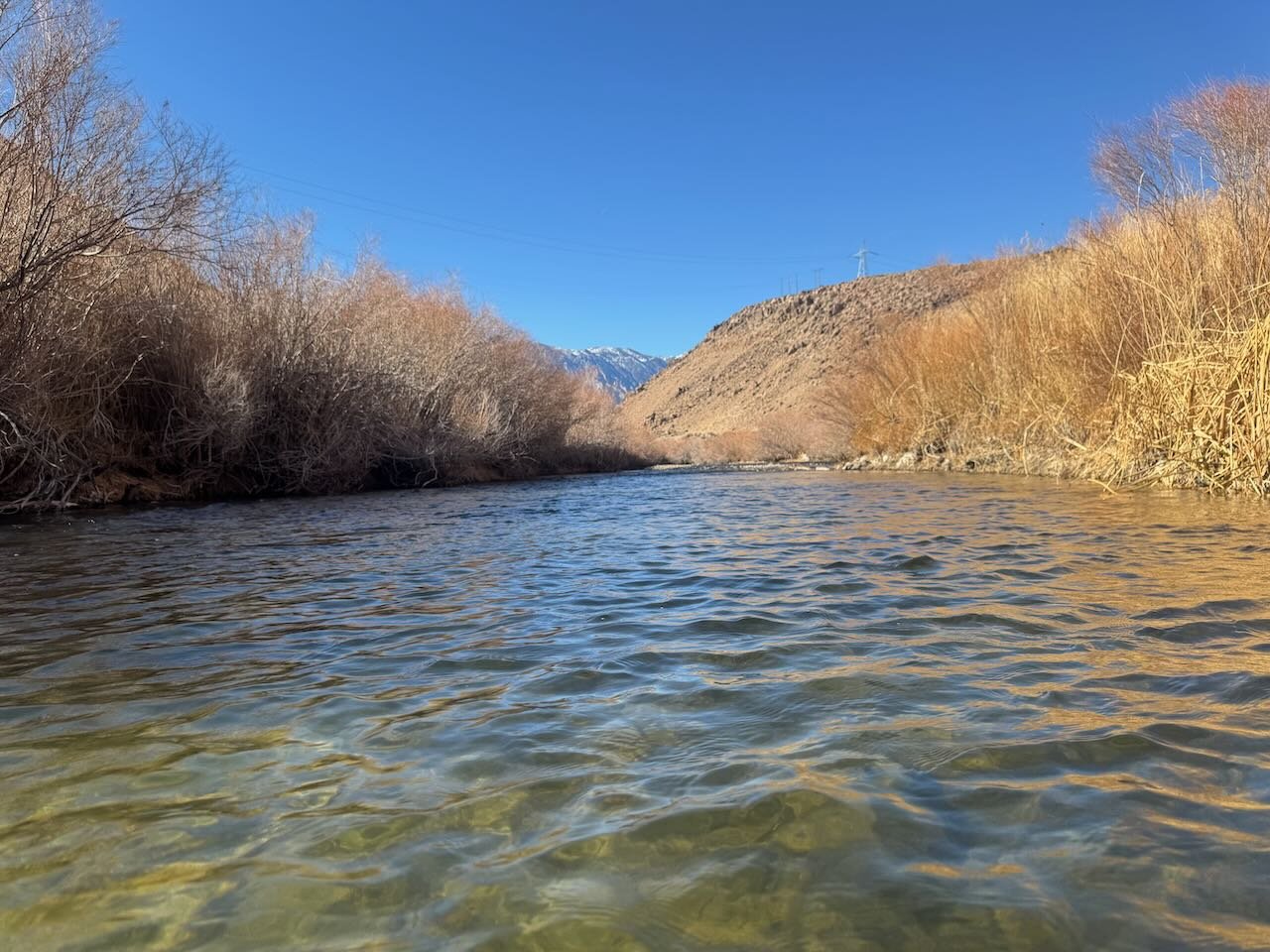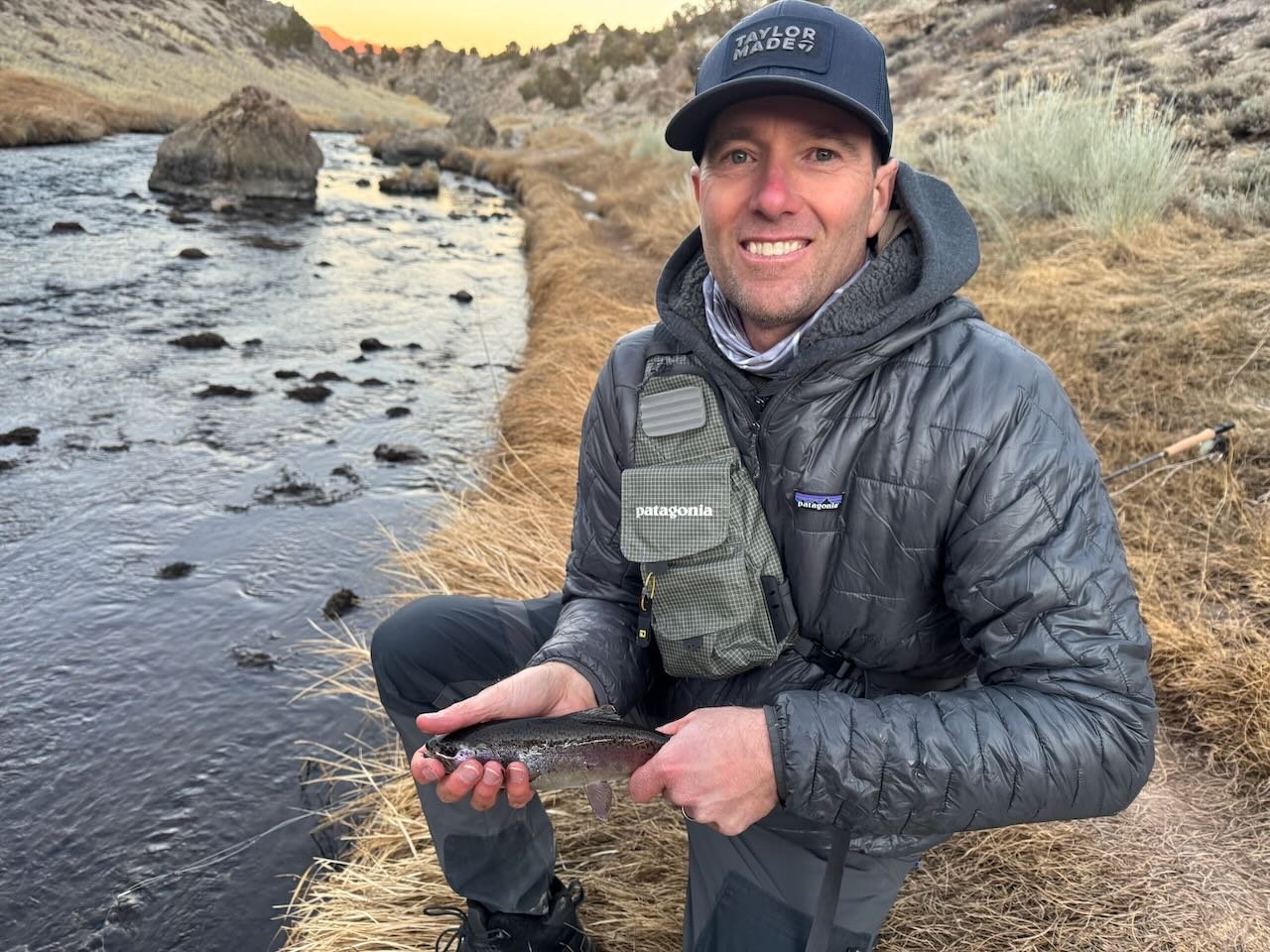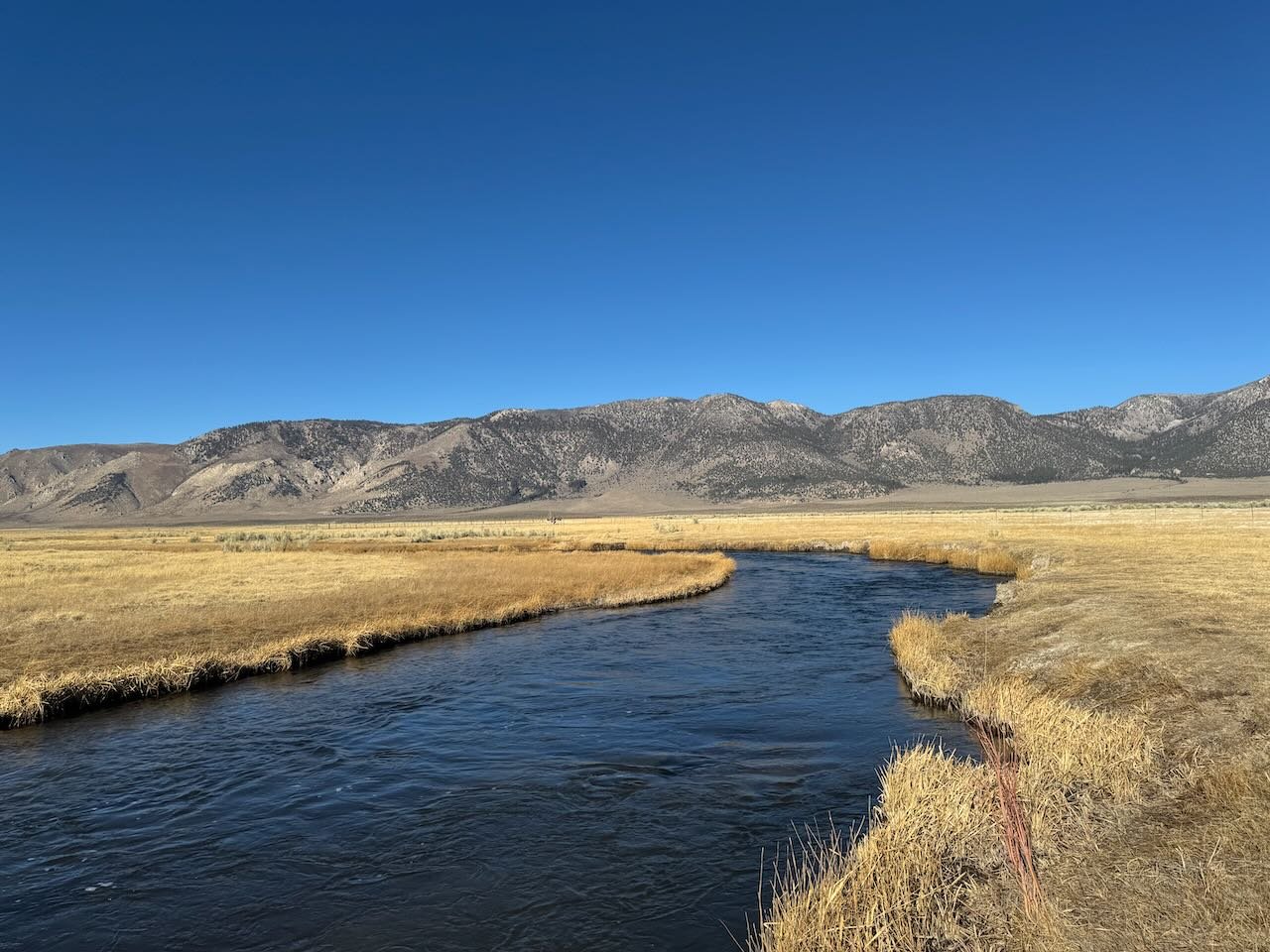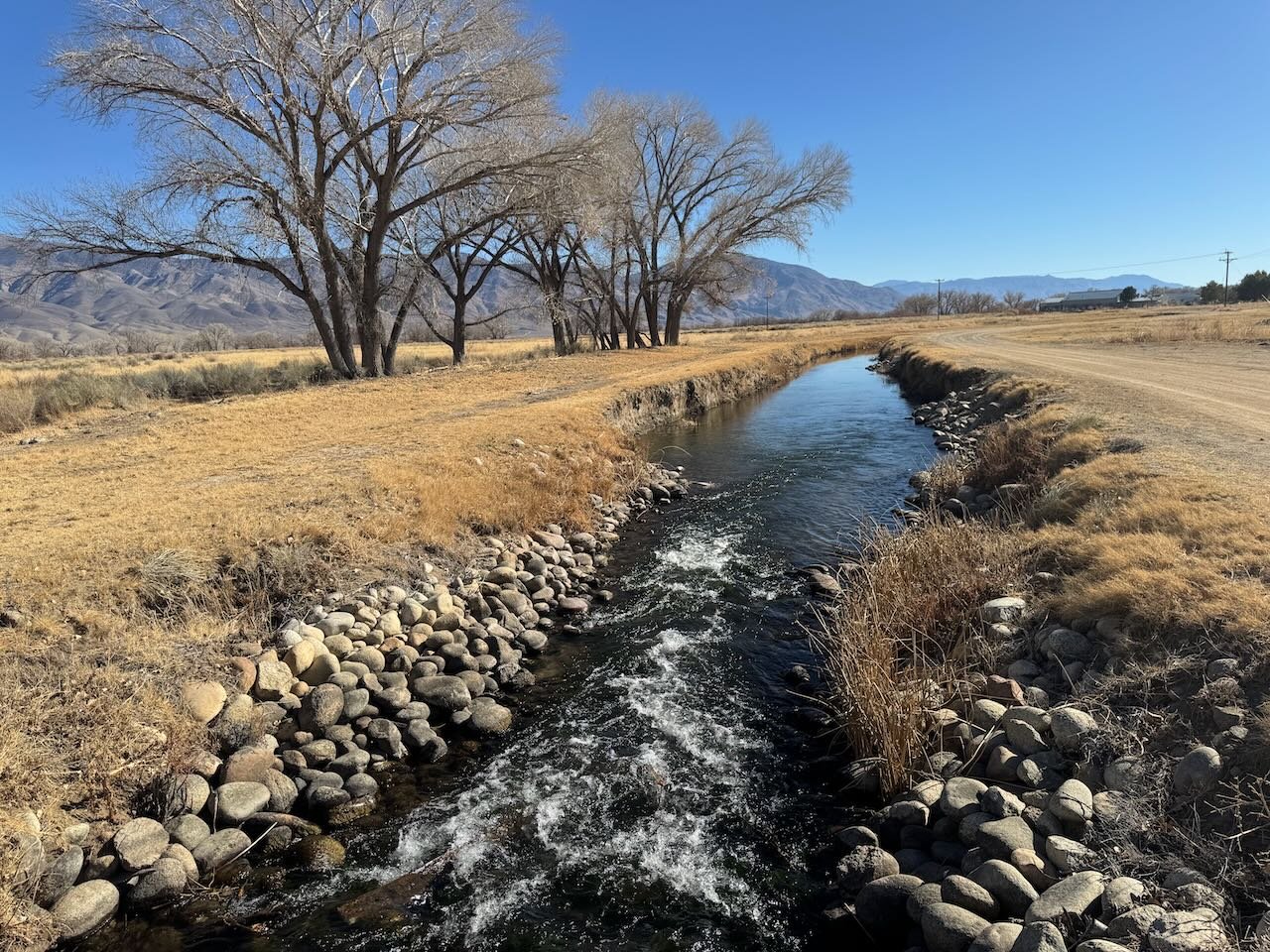If you are looking for tips on fly fishing techniques on Eastern Sierra waters, upcoming events and where the best Eastern Sierra weekend fly fishing spot is, sign up for the email on the webpage at https://www.sierrabrightdot.com
Weather is fickle in the Eastern Sierra. There have been cold days and unseasonable warm days. We are in desperate need of a winter snow pack to provide water for next year’s stream flows and to keep the lakes full. This weekend might see a little bit of much needed precipitation. Midges, mayflies, caddisflies and stoneflies are hatching and providing the food source the trout are feeding on. Nymphing is the most productive method of catching trout right now in the Eastern Sierra. There are a few opportunities for catching trout on dry flies on the surface of the creeks and streams.
Snow in the Eastern Sierra right now is not enough to provide water for the streams and lakes this summer.
Lower Owens River
Wild Trout Section:
Cold water is making the fly fishing tough. The trout are feeding on stick caddis, winter Skwala stoneflies, midges and mayfly nymphs. Water flows have been in the low 70 CFS which allows fly fishers to wade anywhere they want in the river bed except for the holes which are deeper than the fly fisher is tall. Size 18 bead head flash back pheasant tail nymphs imitate the stick caddis and the blue wing olive mayfly nymphs. Size 20 tiger, zebra and blood midges imitate the black fly larvae and midges. Size 12 stoner nymphs imitate the winter skwala nymphs. Key to success is to have the right weight on the tippet or in the flies. Saw my first blue wing olive hatch this week with trout consistently feeding on the surface on the hatching blue wing olive duns.
At 70 CFS it’s easy to access the areas that are inaccessible from shore due to the thick riparian vegetation of tulles and willows.
Hot Creek
Interpretive Site:
Mid-day hatches of midges have the wild trout in the Interpretive Site of Hot Creek feeding on midge nymphs. There are a few blue wing olive mayflies hatching in the middle of the midge hatch. Nymphing with size 22 tiger, zebra and blood midge imitations, size 18 olive quilldigons and size 18 bead head flash back pheasant tail nymphs are fooling the wild brown and rainbow trout. Using dry flies for the indicator reduces the opportunity for spooking trout. For the dry fly in a dry and dropper rig on Hot Creek use a mini Chernobyl ant, size 14 stimulator or size 16 Adams Parachute.
An evening session in Hot Creek Canyon with Dan Barelmann from Encinitas with a rainbow trout that took a mini Chernobyl ant of the surface.
Hot Creek
Canyon Section:
Middle of the day the canyon section of Hot Creek has been devoid of winter fly fishers. Once the sun goes behind the canyon walls fly fishers need to be bundled up to stay warm. Wind is adding to the chill felt by anglers. The flats in the canyon section are tough to fish, but are holding trout. The deeper holes are a great place to nymph with a Euro rig or a dry and dropper rig. The mid-day midge hatch has the trout actively feeding. For the nymphs use midge pupae and midge nymph patterns in blood, zebra or tiger colorations in size 20 or 22. Stoner nymphs is size 12, bead head flash back pheasant tail nymphs in size 18, olive quilldigons in size 18 and olive SOS nymphs in size 20 are fooling the wild trout.
It's late January and the upper Owens River looks like fall because it’s missing its blanket of snow.
Upper Owens River
Above Benton Crossing Bridge:
Water is high and slightly off color. Access on the dirt roads out to the upper Owens River is just like in the summer time. There might be a tad more water on the roads in summer after a summer rain shower. With the easy access to the upper Owens River the trophy trout are seeing lots of fly fishing pressure. The trophy rainbow trout are there, they just need some extra effort to find them and to get them to take your flies. Since most fly fishers are nymphing try throwing a streamer at them. Offering them something different might get them to bite. I’m sticking to my Euro outfit and throwing size 12 stoner nymphs, size 14 copper John’s, size 12 green/gold wire Prince nymphs and variations of a gold ribbed hare’s ear. Work the deep holes, deep runs and cutbanks with your nymphs. Don’t be afraid to put a 100 drifts in a hole. The key is for your fly and the trout to be in the same place at the same time.
Fast water sections and deep holes are areas you can fly fish without spooking trout..
Bishop Creek Canal
Behind Bishop Veterinary Hospital:
Fly fishing in the afternoons have been tough as the angle of the sun makes it hard to keep your shadow off the water. The trout are vary spooky in the low clear water and are hard to approach. Fish the deeper holes and faster riffle sections where the fish are not as spooky as in the slow, low and clear water sections. Nymphing with size 20 blood midges, zebra midge and tiger midges, size 18 olive quilldigons and size 18 bead head flash back pheasant tail nymphs is producing a few trout if you’re in an area where you’re not spooking trout.





